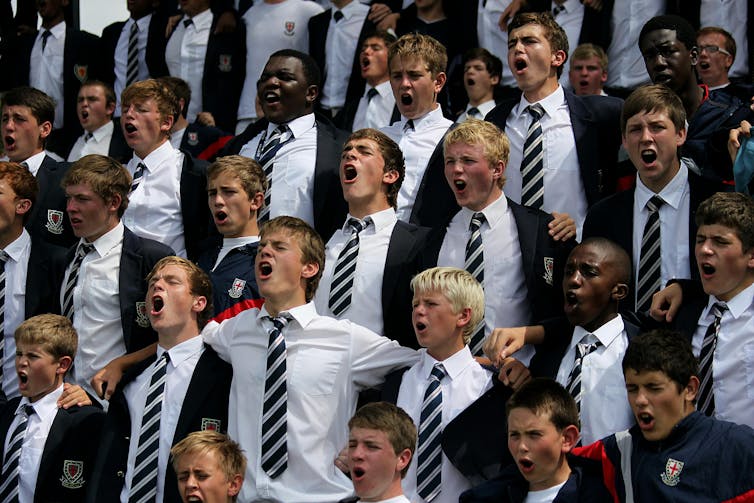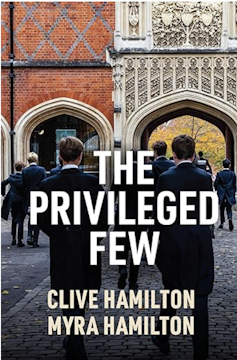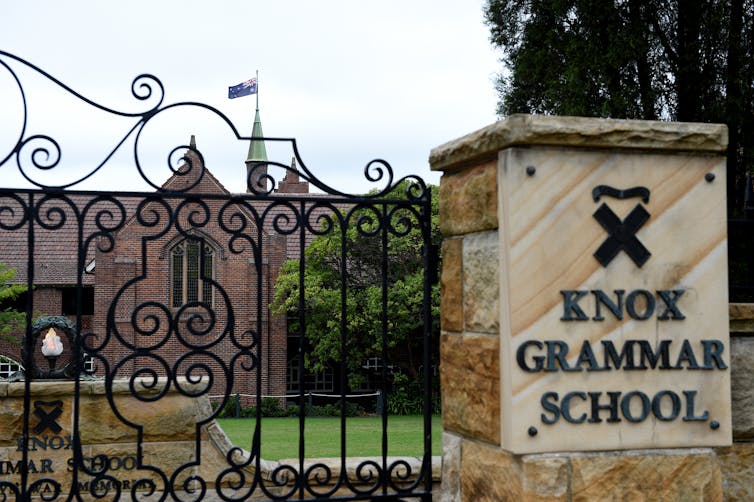In 2021, the coach of the Perth-based West Coast Eagles Australian rules football team said recruits who attended public schools and came from single-parent families are too costly to manage off-field and the club might be better off concentrating on private school boys from stable families.
His comments came a year after a Western Australian parliamentary inquiry found elite private schools had provided 30 to 40% of the state’s AFL draftees in the previous three years, even though they accounted for only seven of the state’s 300 secondary schools.
The committee was alarmed that state government funding for football development was going disproportionately to the elite schools, giving boys from those schools an “unfair advantage”. The great Indigenous player Dale Kickett observed that football is one of the few careers in which the gap between Indigenous and non-Indigenous kids was narrowing.
If the opportunity to play at the top level were taken away, said Kickett, the competition would become just “a bunch of rich kids playing each other”. Others pointed out that the West Coast Eagles’ two most infamous players, plagued with drug problems, were educated at private schools.

Elite domination of sport is not confined to Australian football. The encroachment of privilege into sport is particularly evident in the sports that have a higher social status – rugby (but not rugby league), rowing, tennis, sailing, equestrian and cricket.
In England, private schools accounting for 7% of high school students supplied 40% of England’s test match batters born between 1986 and 1999 and 31% of test match bowlers. In Australia, after a sharp increase in the 1990s, the share of privately educated players in Ashes cricket teams has been hovering around 45%.
Sporting hothouses
If top-class players are made by intensive coaching as teenagers, this is not surprising when we see the lavish sporting facilities at schools such as Wesley College in Melbourne and the King’s School in Parramatta, which boasts of its 17 sporting fields.
It’s true around 40% of high school students in Australia are enrolled in private schools. However, there is a very wide gap in fees, facilities and prestige from the lowest (mostly in the Catholic system) to the highest (mostly non-evangelical Protestant schools). The elite private schools in Australia – including the elite 11 members of the Associated Public Schools grouping in Melbourne, the eight belonging to Sydney’s Great Public Schools grouping plus a couple of dozen others – correspond to the private sector in England.
Not only in Western Australia have elite schools come to dominate the top ranks of Australian rules football, once seen as the sporting code that crossed all class barriers.
The 11 APS schools (around 0.2% of all high schools in Victoria) provide around a quarter of players drafted into AFL clubs each year. In 2019, Caulfield Grammar alone (fees A$35,746 annually in Year 12 at the time of writing) was the source of 19 AFL players in the league. Haileybury (A$35,920 at the time of writing) supplied 20 players.
In addition to top-class facilities and coaches drawn from the ranks of celebrated former players, one of the key factors has been the decision from around 2000 to aggressively recruit talented teenagers from state schools and put them on scholarships. Using the talents of working-class kids to enhance the reputation of privileged schools is similar to the function of Indigenous scholarships. In fact, the two often overlap.

Children with wealthy parents and sporting talent are especially prized. Beyond its “outstanding sporting facilities”, Sydney’s Knox Grammar offers a special program to support “high-performance student athletes considering a career in elite sport”. They are promised personalised one-on-one mentoring by high-performance coaches, an individual performance plan and regular visits from experts.
The gap between sporting facilities available to children from families of modest means and those from wealthy families is widening. While cashed-up private schools have been using tax-deductible donations from well-heeled alumni to build state-of-the-art Olympic swimming pools, local councils across Australia have been closing municipal pools because they cannot afford to maintain them.
Across most sports, the arrival of more Indigenous players and the elevation of women’s sports in traditional male bastions such as cricket, AFL and rugby has been welcomed. Yet the growing domination of the top levels of these sports by young people passing through the hothouses of elite schools suggests that improving gender and ethnic diversity is camouflaging declining “class” diversity.
Hogging society’s highest symbols of esteem.
In Australia, perhaps no form of symbolic capital is purer than an Order of Australia. It has four levels, Companion (AC), Officer (AO), Member (AM) and Medal (OAM), in descending order. ACs are rare, often fewer than 10 in a year, and highly coveted.
AOs are highly regarded and difficult to obtain, with around 100 awarded each year. AMs are awarded for service to a particular field and are more common. OAMs are given mostly to volunteers at local sports clubs, youth groups, charities, and so on.
Decisions are made by the Council of the Order of Australia, comprising a diverse membership of well-regarded community members and state government representatives. The Council commissions its own independent referees’ reports from people in the same field as the various nominees.
Today, the proportion of awards going to women is approaching parity with men. Yet no one is advocating for more class diversity. The lowest award, the OAM, typically goes to working-class people in local communities, but at the higher levels, networks of privilege can determine who receives the top honours.
To be in the running for a top award you need four or five high-level referees, preferably with ACs themselves. How many people, even very accomplished ones, know five distinguished people willing to write a reference?
An analysis by Sydney Morning Herald journalists in 2021 revealed a quarter of the richest 200 people in Australia have awards. Directors of major corporations are strongly represented, and the recipients of the top awards, AOs and ACs, are heavily concentrated in the country’s wealthiest suburbs – 67 residents of Toorak had them, 57 in Mosman, 45 in South Yarra, 34 in Kew, and 39 in Vaucluse. The honours system, they concluded, “is arguably just as class-based as ever”.
We examined the educational backgrounds of the 63 people awarded Australia’s highest honour, the Companion of the Order of Australia (AC), over the four years 2019–22. Of those whose high schools could be identified, 34 (71%) attended private schools and 14 (29%) public schools. Of those who attended private schools, they were overwhelmingly elite ones (27 of the 34). It’s hard to avoid the conclusion that those born into privilege hog society’s highest symbols of esteem.
Has elite bias in the award of top honours improved or worsened in recent decades? We compared data from 2019–22, with the four-year period 1986–9 – that is, 33 years earlier. In the earlier period, 64 ACs were awarded, compared with 63 in the later period.
The share going to private school graduates rose from 66% in the earlier period to 71% in the recent period, with the share going to graduates of expensive private schools rising from 47 to 56%. Public school graduates received 34% of ACs in 1986–9 and 29% in the recent period. On this evidence, class bias has become worse.
In the earlier period, 59 of the 64 ACs went to men and five to women; in the recent period, men received only 33 of the 63 awards and women 30. While we congratulate ourselves on greater gender diversity, the continuing domination of these most prestigious awards by wealthy elites goes unnoticed.
Our privately schooled Rhodes scholars
We examined the schooling of Australian Rhodes scholars over the four decades 1983–2022. Data are systematically collected for three states only – Queensland, WA and Tasmania. Given that exclusive private schools are more powerful in Sydney and Melbourne than elsewhere, we expect our results, if anything, to understate the bias.
The first observation to emerge from the data is increasing gender equality. In the first two decades, 1983–2004, 28% of recipients were women, while in the second two decades, 41% were women.
Over those decades, around 70% of all secondary students in the three states attended state schools but state school graduates received only 31% of Rhodes scholarships. 39% of Rhodes scholars attended high-fee private schools and 30% attended private schools with medium-low fees.
Comparing the two periods, 1983–2004 and 2005–22, the share of scholarships going to state school graduates fell from 36% to 27%. The share of scholarships going to students from the most exclusive schools, accounting for about 5% of all students, rose from 33% to 45%.
The dominance of elite private schools over the most prestigious academic awards has grown over the last 40 years.
Graduates of elite private schools are around 20 times more likely to win Rhodes scholarships than those who went through the government system, even though their academic performance is no higher when account is taken of socioeconomic status. As we will see next, the same pattern emerges in appointments to Australia’s highest court.
The High Court: a decline in class diversity
In the legal world, “privilege” has more than one meaning. In 2021, a 20-year-old man found himself in court after he had punched a woman in the face because she had pushed back against his drunken insults in a pub (he had called her a “slut” and told her to “put her tits away”).
Defending the man before the judge stood one of Sydney’s very best silks, Phillip Boulten SC, a former president of the NSW Bar Association and a barrister-of-choice for the city’s rich and powerful.
After hearing an account of the incident and the man’s admission of guilt for the assault, the judge decided to record no conviction. His honour’s judgement referred to the fact that the man had attended Knox Grammar, an elite school in Sydney’s leafy northern suburbs (Year 12 annual fee A$36,840 at the time of writing).

His reasoning was from start to finish exculpatory, suggesting the woman’s clothing “might have been perceived by a 20-year-old former student from Knox to be provocative” and that his action in punching the woman was “an aberration”. He wished the defendant good luck and advised him to “keep your nose clean, young man”.
In Britain, 65% of senior judges on the bench in 2019 had attended private schools. In the United States, Supreme Court judges come overwhelmingly from three Ivy League law schools, Yale, Columbia and Harvard, admission to which favours students from wealthy families.
New data show that the same elite school bias prevails in Australia. Since the end of the second world war, 40 justices have been appointed to Australia’s highest court. If we divide them into two periods, each with 20 appointments, we see a welcome increase in diversity on the High Court bench.
In the first period, 1946–87, all the justices were men; in the second period, 1987–2022, seven of the 20 appointments were women. However, this growing gender diversity conceals a decline in class diversity.
In the earlier period, 60% of the High Court’s justices had been educated at private schools, with 45% at expensive private schools, bringing to the bench the worldview absorbed at those places.
In the second period, 80% attended private schools, with fully 60% the products of the most privileged schools.
The last ten appointments since 2009 show no improvement. While five have been women, only three of the ten attended public schools, with seven the products of elite private institutions.
Although judges are required to make decisions without bias or prejudice, they are human beings. Today, when judges make comments or rulings that are explicitly sexist or racist, an uproar often follows, which isn’t to say that they do not make judgements that are implicitly sexist or racist. Similarly, and perhaps more insidiously, judges from privileged backgrounds may be prone to what has been called by a US chief judge “unselfconscious cultural elitism”.
Studies show that judges favour wealthy litigants over poor ones, in part because they may have “a fundamental misunderstanding of the lives of poor people.”
When asked whether the appointment of female judges makes a difference to judgements, Lady Hale, then president of the Supreme Court in the UK, said, “Where you start from can have an effect on where you end up,” which applies as much to class as it does to gender.
This an edited extract from The Privileged Few by Clive Hamilton and Myra Hamilton (Polity), published in The Conversation on 23 May 2024
